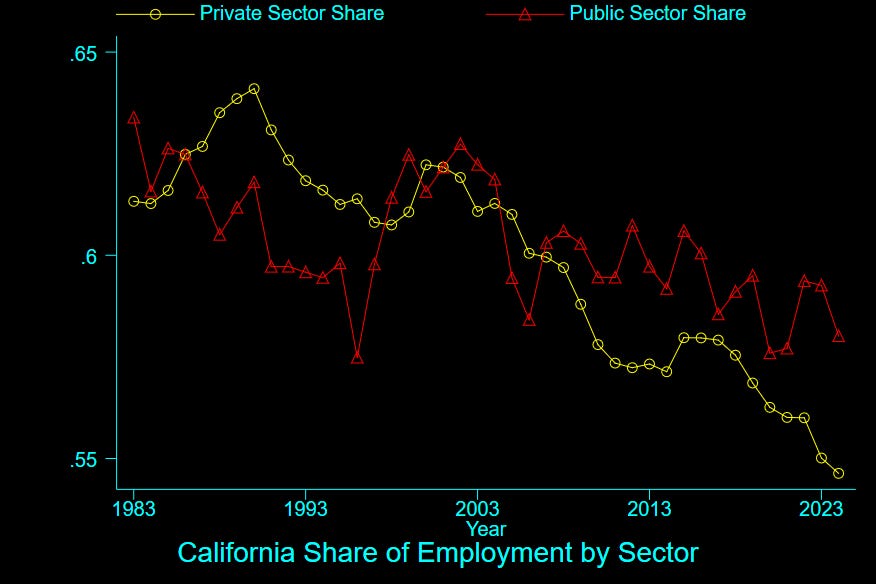Facts About Labor Market Dynamics in California versus Texas
I use data from this website to teach you some facts about local labor market dynamics in Texas versus California. For more details about the data creation, click here. Using their data, I have created four graphs for these two major states over the years 1983 to 2024.
In the first graph, I calculate the ratio of Total California Employment to Total Texas Employment for each year from 1983 to 2024. If this equals one then the two states have the same number of jobs.
Starting in 2000, I see sharp evidence of convergence, as the ratio has shrunk from 1.7 to roughly 1.25.
It is known that the Public Sector (teachers, police, firemen) has a much higher unionization Rate. In Figure 2, I disaggregate the data and report the unionization rate by state, year, and sector. For example, in 1983, 43% of California public sector workers were union members.
Texas has a much lower unionization rate for both its private and public sector. California’s private sector unionization rate has shrunk over time. Continued deindustrialization is likely to be one contributing factor.
In Figure 3, I calculate the share of jobs that are in the public sector by state/year. These two graphs are pretty similar indicating that the two states have a roughly constant public employment share of roughly 16%.
In the final figure presented below, I calculate California’s share of total employment by sector by year. For example, in 1983 roughly 61% of total private sector employment was in California and 39% was in Texas. In 2024, 55% of total private sector employment was in California and 45% was in Texas.
Over the last decade, California’s public sector employment share has remained roughly constant but its private sector employment share has shrunk as Texas’s private employment sector has expanded.
These graphs raise the question of how much have powerful California public sector unions contributed to raising the cost of providing local government services? Has this increase in the marginal cost of government contributed to shrinking private sector employment in California?







